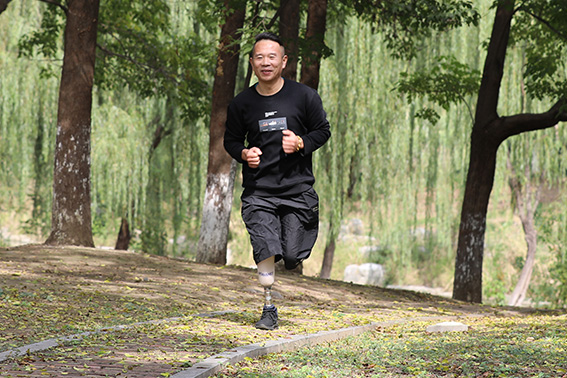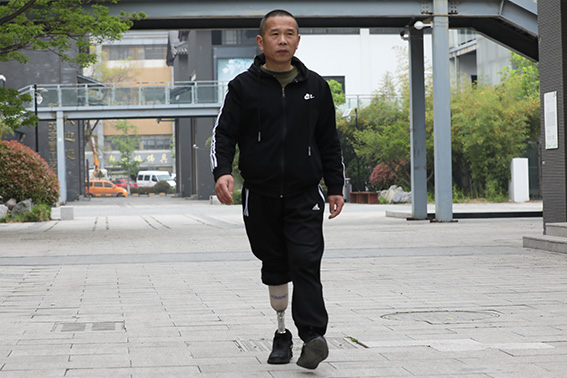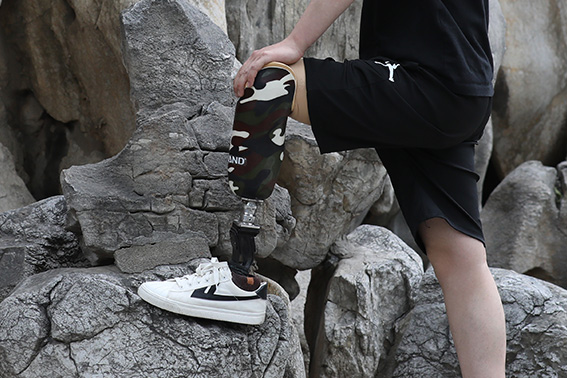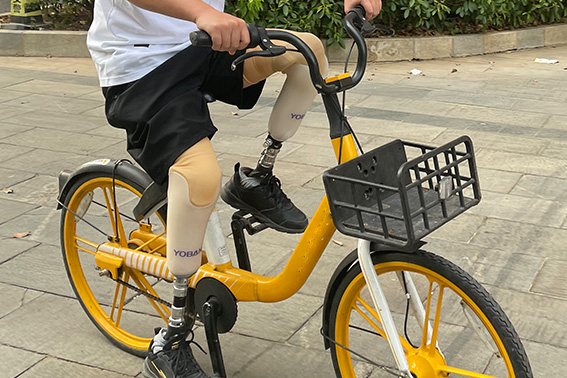News Center |

The traditional BK prosthesis uses an insertion socket and the prosthesis is a shell-type structure, and then has a metal knee hinge and a leather thigh. Therefore, it needs to rely on the thigh for tightening and fixation when wearing it, so this has a certain impact on the blood circulation of the thigh, and it is also unreasonable in the adaptation of the prosthetic socket, mainly because it cannot be fully contacted with the residual limb. However, there will be a BK hinge to stabilize the knee, which is characterized by strong weight-bearing capacity and a wide range of applications for prosthetics, so its production cost is relatively low. According to the different materials used in the manufacture of the socket, it can be divided into aluminum BK prosthesis, leather BK prosthesis, wooden BK prosthesis, etc. At present, the number of traditional BK prostheses produced by prosthesis factories in various places is not large, mainly aluminum BK prostheses. The leather BK prosthesis is more suitable for patients in northern China because of its soft, comfortable socket and good thermal insulation. The wooden BK prosthesis has good air permeability, is not easily deformed, and is easy to clean. Some patients are still willing to use it.

The patellar ligament weight-bearing BK prosthesis is the earliest product of modern prostheses. It mainly uses the patellar ligament as the main weight-bearing part. The resin composite material used is laminated and vacuumized to form the prosthetic socket, so the metal knee joint hinge and upper thigh are removed. Therefore, compared with the traditional BK prosthesis, it belongs to the prosthetic socket that fits the mouth shape and the residual limb and bears the weight of the key parts in the plug-in socket, which conforms to the physiological and anatomical requirements of the human body, and also removes the upper part of the thigh. Therefore, the impact on blood circulation is reduced, and it is more comfortable and convenient to wear. The patellar ligament weight-bearing BK prosthesis is divided into three types: ring-belt type, wedge type and knee wrap type according to the suspension method of its socket:

The Ring-strap BK Prosthesis is a patellar ligament-bearing BK prosthesis with a suprapatellar ring for patients with mid-BK amputations.
The socket of the wrap-knee BK prosthesis extends on the anterior wall to the superior border of the patella, and then wraps the patella, and on both sides of the socket can extend to the superior border of the medial and lateral condyles of the femur. Therefore, this BK prosthesis has good suspension performance and can be applied to amputee patients whose BK residual limb is too short.

The prosthetic socket of the wedge-type BK prosthesis ends at the lower edge of the patella on the anterior wall, and the wings on both sides are protruding, and then extend to the upper edge of the medial and lateral condyles of the femur, especially the medial upper wall is provided with a removable wedge-shaped plate conforms to the shape of the medial condyle of the femur, so when the residual limb penetrates into the socket, the wedge-shaped plate is inserted to play a role of suspension and fixation. This BK prosthesis only adopts a different suspension method from the knee-wrap prosthesis, and its appearance is better than that of the knee-wrap prosthesis, so it is also suitable for amputee patients whose BK residual limb is too short.

The full contact BK prosthesis is also called TSB BK prosthesis. Moreover, the prosthetic socket needs to be properly extended upwards on both sides, so that the suprapatellar girdle can not be used for suspension, and it can also be applied to patients with BK amputations in various parts.
The PTK BK prosthesis is developed in recent years by combining the characteristics of the patellar ligament weight-bearing BK prosthesis and the full-contact BK prosthesis. First of all, when taking the plaster cast of the socket, a special pressure block should be used to tightly press the femoral medial condyle. The two side walls extend upward to the medial condyle of the femur and have a certain elasticity, and the upper edge of the medial epicondyle of the femur has an inward wedge-shaped protrusion, so as to play the role of suspension. The inner lining of the socket is like a knee-covered prosthesis, which is made into a full-knee type. This BK limb is mainly suitable for patients with BK amputations in various parts because of its reasonable load-bearing, strong suspension force, small piston effect, and convenient wearing and taking off.
Copyright © 2015 USA-YOBAND. All Rights Reserved 沪ICP备09003269号